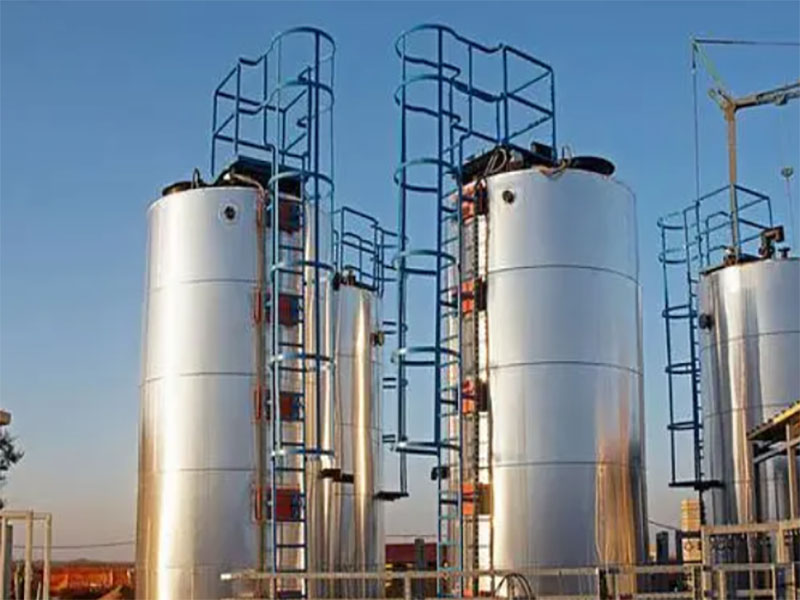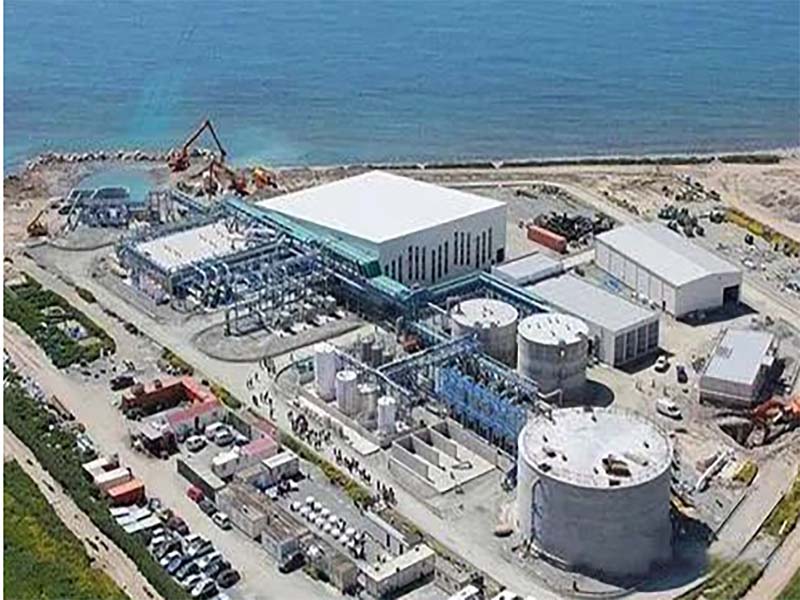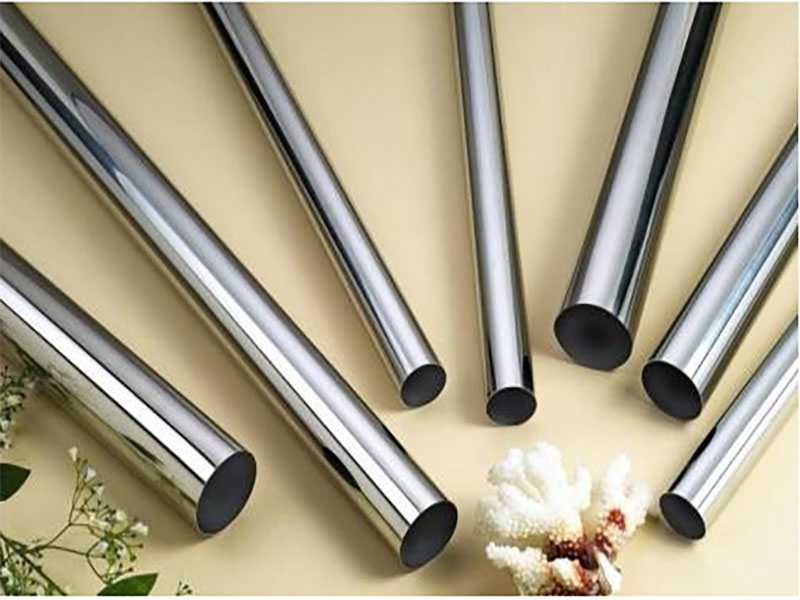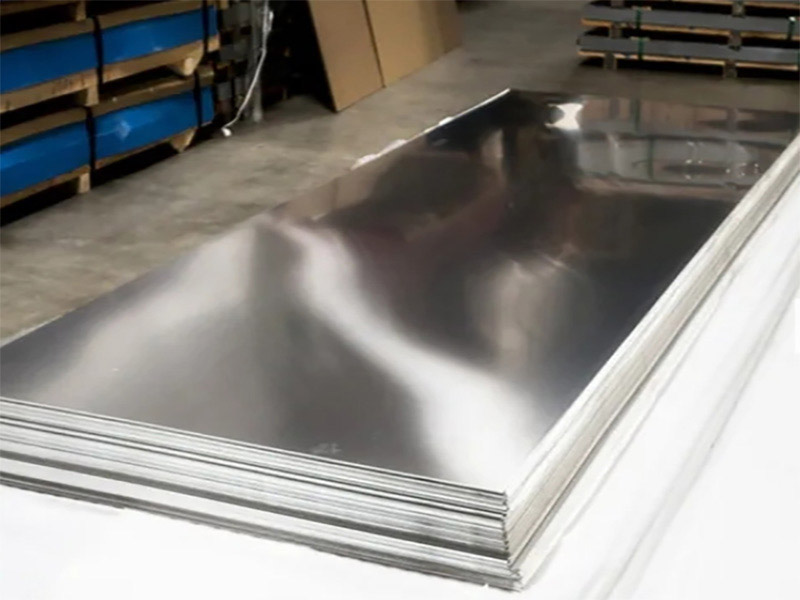Welcome to Zhishang Steel Co., Ltd.
TEL: (Gavin) +86-15665898999 | Email : info@zhishangsteel.com
Location:Home>>News>>Industry News » Duplex Stainless Steel

Duplex stainless steel (DSS) refers to stainless steel in which ferrite and austenite each account for about 50%. Generally speaking, the content of the lesser phase needs to be at least 30%. In the case of low C content, the Cr content is 18% to 28%, and the Ni content is 3% to 10%. Some steels also contain alloying elements such as molybdenum, copper, niobium, titanium and nitrogen.

This steel has the characteristics of austenitic and ferritic stainless steel. Compared with ferrite, it has higher plasticity and toughness, no room temperature brittleness, significantly improved resistance to intergranular corrosion and welding performance, while still maintaining the brittleness of ferrite, high thermal conductivity and elemental stainless steel Superplasticity.
Compared with austenitic stainless steel, it has high strength and significantly improves the resistance to intergranular corrosion and chloride stress corrosion. Duplex stainless steel has excellent pitting corrosion resistance and is also a nickel-saving stainless steel.
Due to the characteristics of two-phase structure, through correct control of chemical composition and heat treatment process, duplex stainless steel has both the advantages of ferritic stainless steel and austenitic stainless steel. It combines the excellent toughness and weldability of austenitic stainless steel and iron, and the higher strength and resistance of valve body stainless steel
Combines chloride stress corrosion performance. It is these superior properties that make duplex stainless steel develop rapidly as a weldable structural material. Since the 1980s, it has become a side-by-side martensitic, austenitic and ferritic stainless steel. Steel category. Duplex stainless steel has the following performance characteristics:
Generally speaking, 18-8 austenitic stainless steel is prone to stress corrosion cracking in neutral chloride solution above 60°C. In the industrial medium of trace chloride and hydrogen sulfide, heat exchangers, evaporators and other equipment made of this stainless steel have a tendency to produce stress corrosion cracking, but duplex stainless steel has good corrosion resistance.
(3) It has good corrosion fatigue and wear and corrosion resistance. Under certain corrosive media conditions, it is suitable for manufacturing pumps, valves and other power equipment.
It has higher strength and fatigue strength, and its yield strength is twice that of 18-8 austenitic stainless steel. The elongation in the solid solution state reaches 25%, and the toughness value AK (V-notch) is greater than 100J.
Duplex stainless steel has the characteristics of austenitic stainless steel and ferritic stainless steel, and its austenite + ferrite duplex structure and two-phase structure content are basically the same. The yield strength can reach 400Mpa~550MPa, which is twice that of ordinary austenitic stainless steel.
Compared with ferritic stainless steel, duplex stainless steel has higher toughness, lower brittle transition temperature, and significantly improved resistance to intergranular corrosion and welding performance. At the same time, it retains some of the characteristics of ferritic stainless steel, such as brittleness and heat at 475°C.
High conductivity, low coefficient of linear expansion, superplasticity and magnetism. Compared with austenitic stainless steel, duplex stainless steel has higher strength, especially the yield strength is significantly improved, and the properties of pitting corrosion, stress corrosion resistance, and corrosion fatigue resistance are also significantly improved.
Duplex stainless steel is divided into four categories according to chemical composition: Cr18 type, Cr23 type (no molybdenum), Cr22 type and Cr25 type. Cr25 type duplex stainless steel can be divided into ordinary type and super duplex stainless steel. Among them, Cr22 and Cr25 are widely used. The duplex stainless steel used in our country is mainly produced in Sweden. The specific grades are: 3RE60 (Cr18 type), SAF2304 (Cr23 type), SAF2205 (Cr22 type), SAF2507 (Cr25 type).

The first category is a low alloy type, representing the UNS S32304 (23Cr-4Ni-0.1N) brand, the steel does not contain molybdenum, and the PREN value is 24-25. In terms of stress corrosion resistance, it can replace AISI304 or 316.
The second category is the medium alloy type, the representative grade is UNS S31803 (22Cr-5Ni-3Mo-0.15N), the PREN value is 32-33, and its corrosion resistance is between AISI 316L and 6%Mo+N austenitic stainless steel between.
The third category is high alloy steel, which usually contains 25% chromium, also contains molybdenum and nitrogen, and some also contains copper and tungsten.
The standard grade is UNSS32550 (25Cr-6Ni-3Mo-2Cu-0.2N), and the PREN value is 38- 39. The corrosion resistance of this steel is higher than that of 22% chromium duplex stainless steel.

The fourth category is super duplex stainless steel, containing high molybdenum and high nitrogen, standard grade UNS S32750 (25Cr-7Ni-3.7Mo-0.3N), some also contain tungsten and copper, PREN value is greater than 40, suitable for harsh media conditions , Has good corrosion resistance and comprehensive mechanical properties, comparable to super austenitic stainless steel.
Stainless steel has many different properties. It gradually formed several categories during its development. According to the organization structure, it is divided into four categories:
martensitic stainless steel (including precipitation hardening stainless steel), ferritic stainless steel, austenitic stainless steel and austenitic + ferritic duplex stainless steel;
According to the main chemical composition of steel or some characteristic elements in steel, it is divided into chromium stainless steel, chromium nickel stainless steel, chromium nickel molybdenum stainless steel, low carbon stainless steel, high molybdenum stainless steel, high purity stainless steel, etc. ;

According to the performance characteristics and uses of the steel, it is divided into nitric acid-resistant stainless steel, sulfuric acid-resistant stainless steel, pitting-resistant stainless steel, stress-corrosion-resistant stainless steel, and high-strength stainless steel. ;
According to the functional characteristics of steel, it can be divided into low-temperature stainless steel, non-magnetic stainless steel, free-cutting stainless steel, superplastic stainless steel and so on.
The commonly used classification method is based on the structural characteristics of the steel and the chemical composition of the steel, as well as the combination of the two. Generally divided into martensitic stainless steel, ferritic stainless steel, austenitic stainless steel, duplex stainless steel and precipitation hardening stainless steel, etc.or divided into two categories: chromium stainless steel and nickel stainless steel.

Zhishang Steel has always been a pioneer in custom steel and special supplies, and has been recognized for its efforts in enhancing work efficiency and product quality. In addition to ISO9001:2015 certification, we also adhere to strict quality policies and proprietary procedures. If you have any questions, please contact us to provide the best type of product solution for your pre-painted, coil coating metal process, we will closely support after-sales service to ensure that your subsequent problems can be solved in a timely manner, if you have any questions, please send email to info@zhishangsteel.com, we look forward to serving you.

Zhishang Steel, specializing in domestic steel products trade, warehousing, processing and other services. The team has four service teams: Shandong Zhishang Steel Co., LTD., Shandong Zhiyiheng Trading Co., LTD., Tai 'an Zhishang Economic and Trade Co., LTD., Shandong Zhishang Steel Structure Co., LTD. Mainly engaged in steel coil, coated, stee···